Discover the Most Famous Caves of Iran
Iran is a country that is full of surprises, and one of its most fascinating features is its natural beauty.
With its rugged mountains and stunning deserts, Iran is home to some of the most famous caves in the world. From sedimentary caves formed by water erosion to those showcasing evidence of ancient civilizations, each cave offers unique features and surprises, including underground rivers, pools, stalagmites, and stalactites. Join us on a journey to discover the top 10 most famous caves in Iran and witness the astonishing beauty and historical significance that make them some of the most fascinating places in the world.
Ali Sadr Cave in Hamedan
Ali Sadr Cave is one of the world's largest and most unique water caves. It is located just outside Hamedan in Kabudrahang City, and it boasts clean, fresh air and a mild temperature throughout the year, making it a comfortable destination for visitors of all ages and abilities.
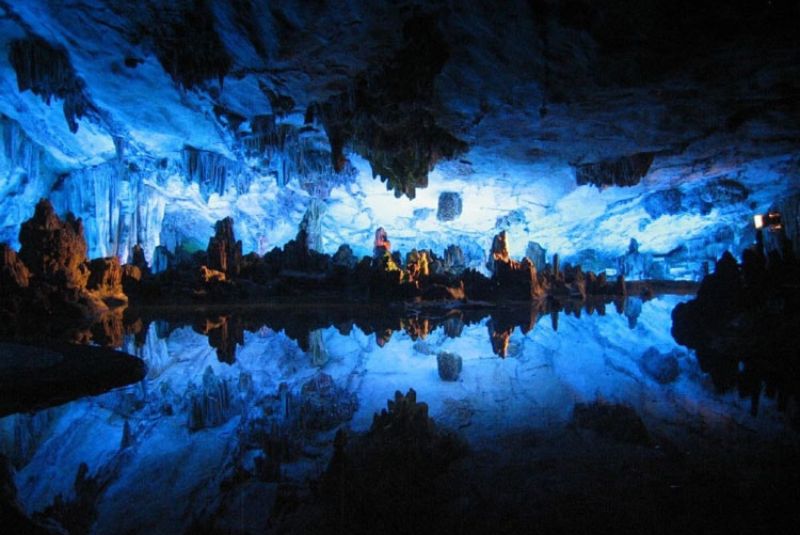
The mountain's rocks that house the cave pertain to the second geological period, i.e. Jurassic, which dates back to 130-190 million years ago. In fact, pieces of evidence within the cave suggest that primitive people lived there at some point in time.
As you enter the cave, you'll be struck by the ceiling covered with the sedimentation of pure calcium carbonate and a mixture of other chemical compounds, forming stalagmites of unique beauty and design that draw visitors' attention. The colorful lighting of every corner adds an extra layer of beauty to this already incredible experience.
One of the unique features of Ali Sadr Cave is its wide lake, which allows for boating to the depths of its million-year-old corridors and labyrinths. The water comes from underground springs and leaks from the walls and ceilings, making it clear and odorless. And while it may be tempting to drink from this pristine source, it's best to avoid it due to its high mineral content.
| Read more: Lavan Island's Enchanting Beauty in Iran
Katale-Khor Cave in Zanjan
Katale-Khor Cave is located in Khoda Bandeh Town in Zanjan Province. The cave is believed to be around 180 million years old and is home to some of the most unique rock formations in the world.
The cave's name, Katale Khor, means "mount of the sun." Legends and folklore surrounding the cave suggest that the mountain "swallows" the sun as it rises from behind it, adding to the mystique and allure of the cave.
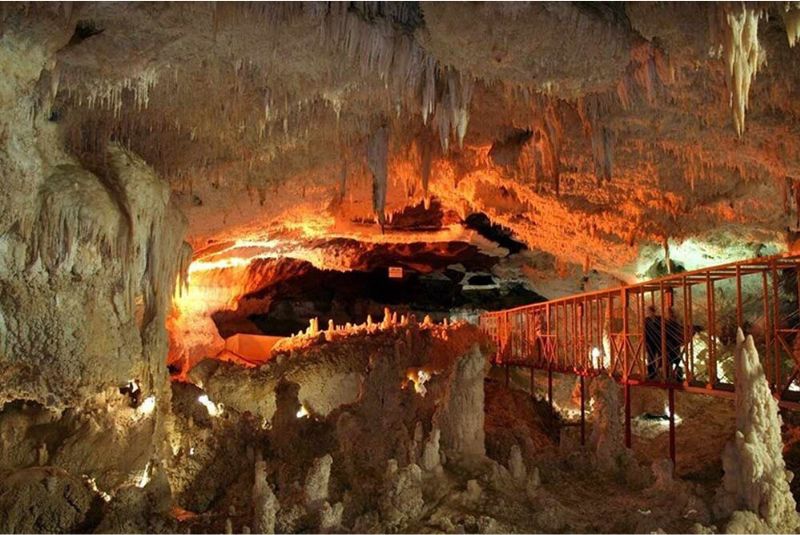
The cave is made of limestone with such high density that light can pass through the stones, creating a breathtaking view. The beauty of Katalehkhor Cave is further enhanced by the formation of stalactites and stalagmites due to calcified precipitation. It also features crystal clear and multicolored icicles suspended from the roof.
In the larger passages of the cave, you'll come across beautiful designs and shapes resembling cauliflower caused by the constant trickle of water on them. And that's not all - The cave is also famous for its underground river, and speleologists believe that the unexplored end of this cave is connected to the famous Ali Sadr Cave, adding to its mystery and allure.
But Katalehkhor Cave is not just a geological marvel; it also holds archaeological significance. Excavations within the cave have unearthed ancient artifacts, including pottery and stone tools, suggesting human habitation during prehistoric times. Also, as you wander through this magnificent cave, keep in mind that the remains of eighty humans were found here, suggesting that it was once home to cavemen.
| Also might be interesting: Most Beautiful Waterfalls in Iran
Namakdan Salt Cave
Nestled on the southwestern coast of Qeshm Island in Hormozgan province lies the longest salt cave in the world, with a length of about 6400 meters- the Namakdan Salt Cave. This remarkable cave is formed in the salt cone-shaped Namakdan mountain.

The cave is also recognized as part of the Qeshm Geopark by UNESCO World Heritage. Its colorful sedimentary layers and white walls have created eye-catching views for visitors, and they sparkle in the light of your headlight. Each layer hides a part of the ancient antiquity of the earth within it.
As you enter the cave, you'll see the floor covered with crystalline salt and incredible stalactites that create a stunning white view. The island's humidity and water penetration into the cave cause the saturated saltwater to leak, producing beautiful icicles on the ceiling.
If you venture further into the cave, you'll come across a small natural white spring that flows throughout the year, fed by the saltwater flows. And the unfamiliar cracky sound caused by stepping on the salt crystals when walking through the cave is a fantastic experience.
The Namakdan Salt Cave is also renowned for its medicinal properties and has various therapeutic uses. Rich in magnesium, spending time in the cave is said to be beneficial for respiratory patients and help them to recover better.
| Don't miss out: Darak Beach, the Intersection of Desert and Sea
Kermanshah Prau Cave
Located near the village of Chalabat, just 12km northeast of Kermanshah city, this cave has a unique structure related to the third period of geology. Its location at 3050 meters above sea level makes it the highest cave in the world, earning it the nickname "Everest of world caves."
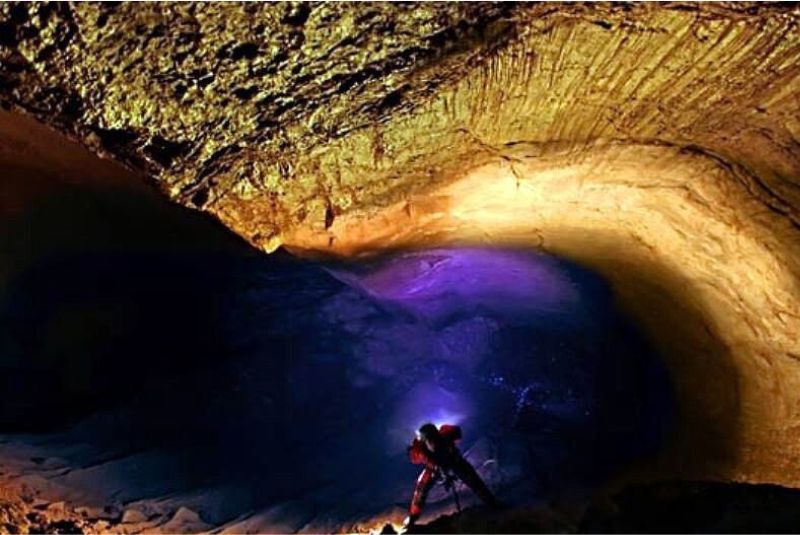
Parau Cave was discovered in 1971 by a British caving team that named their group the Ghar Parau Foundation. At that time, it was the largest vertical cave in the world, and it was granted the status of a natural national monument by the Environmental Protection Agency. Today, there are many deeper caves in the world, and Parau Cave has been pushed down to rank 221 on the list of deepest world caves.
The water flowing inside the cave comes from the underground melting of its glaciers, which creates a frigid environment with temperatures between -1 to -3 degrees Celsius. The cave's rough and porous body and stone walls make navigating tough, and caving clothes can easily tear.
| Read more: Lut Desert, the hottest place on the Earth
Quri Qaleh Cave
Quri Qaleh Cave is another famous cave in Kermanshah province, with a 65 million-year history. It is nestled on the stunning Shahou Mountain slopes, 25 km from Ravansar. This awe-inspiring tourist attraction boasts a remarkable length of 12 kilometers and an impressive depth of 3140 meters, making it one of the longest caves in Western Asia.
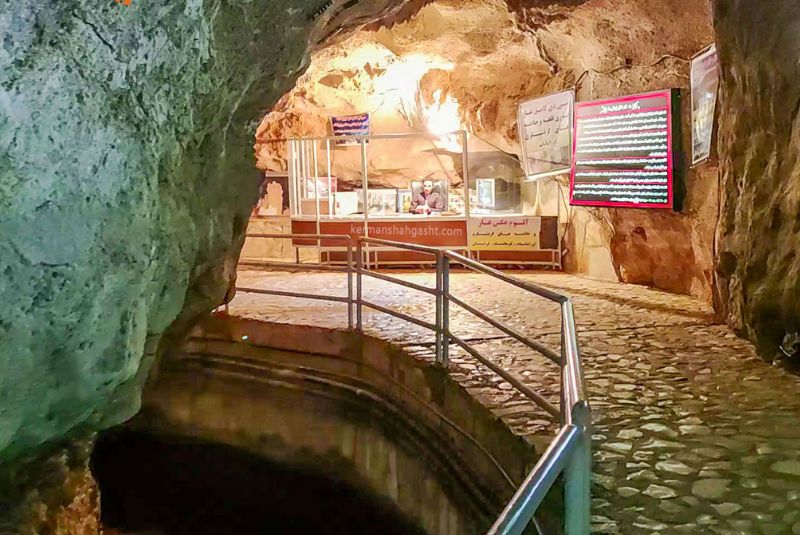
Inside the cave, you'll be amazed by the breathtaking halls named after natural stalactites and stalagmites. From the Elephant to the Heart, Ship, and Waterfall, each hall is uniquely different and mesmerizingly beautiful. And let's not forget the four waterfalls that add a touch of magic to this already enchanting place.
The temperature inside the cave ranges from -7 to 11 degrees Celsius, with a relative humidity of 89 percent. This means you can explore this natural wonderland any time of the year! It's no wonder Quri Qaleh Cave was registered as the 54th national relic on March 17th, 2009, by the Cultural Heritage Organization of Iran.
But that's not all - Quri Qaleh Cave is rich in history and archaeological finds. Some pieces of pottery and coins from the end of the Sassanid Empire have been discovered, along with eight silver plates with eagle, crane, and partridge motifs. And the rare species of bat known as the Mouse-ear can be found inside the cave. Zoologists believe this is a good habitat for them, along with the Yellow-spotted Salamander. And if you're lucky, you might catch a glimpse of the olm, a creature that survived from two hundred million years ago when the dinosaurs roamed the earth.
Outside the cave, you'll find an array of wildlife and plant species, including foxes, rabbits, wild goats, oaks, mountain figs, mountain cherries, and wild almonds. It's truly a natural paradise!
| Discover: Iran's Wildlife | A Nature Lover's Guide + Pics
Karaftu Cave
Karaftu Cave, located in Kurdistan province, is a true gem of nature and human craftsmanship. This ancient cave is one of Iran's largest and most significant caves, with a length of 750 meters and a height of more than 100 meters above the ground. It is believed to have been created during the Tertiary geological era, and the cave structures belong to the Sasanian and Ashkanian Empires.
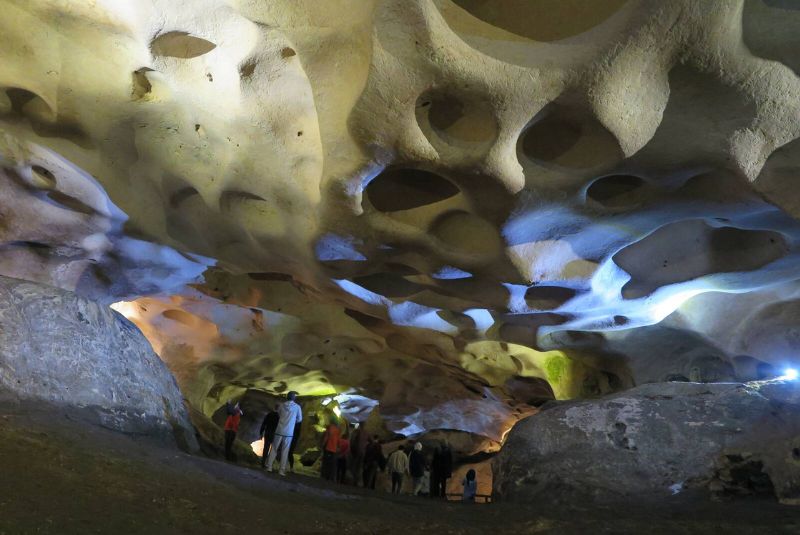
Once you enter the cave, you'll be amazed by the intricate artificial rock chambers, many of which are adorned with ancient inscriptions dating back to the 2nd or 3rd century BCE. The cave also features a four-story structure, and the most beautiful part is the third floor, where a Greek inscription can be found on the entrance of one room, calling it the Temple of Heracles. It is believed that the Seleucid might have temporarily resettled the cave due to the existence of this inscription. And the corridors and passageways of the cave are interconnected, and some chambers are engraved with simple designs of animals, humans, and plants.
Karaftu Cave is also rich in history and archaeological finds. In one of the chambers, the name of Heraclitus is engraved in the Latin script. On one of the walls, there is an impression of a rider hunting a deer, a reminder of the victorious Goodarz the Parthian over the monarch of Armenia. The cave is also related to the eras of Mitraism and sun worshippers, adding to its historical significance.
| Learn more: The Most Spectacular Valleys in Iran
Khofash Cave
Often, when it comes to caves, our minds instantly think of bats. But did you know that not all caves are home to these fascinating mammals? However, Khofash Cave is a must-visit destination for bat enthusiasts.
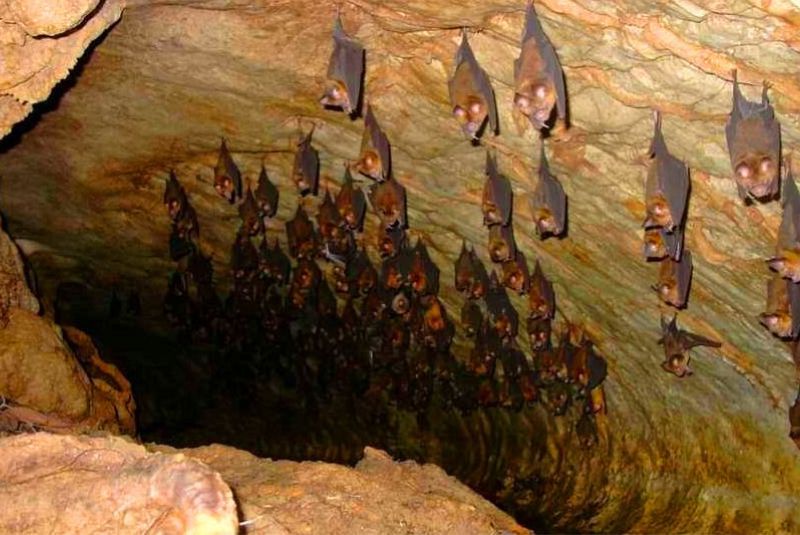
It is located 3 kilometers northeast of Dehloran, and this cave is the most important habitat for thousands of tailed and large bats. It is also interesting to know that Dehlaran Bat Cave is one of the ancient caves used in the Cavemen age.
The cave is 255 meters long, 30 meters wide, and reaches a height of 50 meters. The cave's unique ecosystem is home to different types of bats, who use a special system to find their way in the dark. The Khofash cave has also been registered as a national monument, making it a protected cave.
Aside from its bat population, Dehlaran Bat Cave offers stunning natural beauty. The cave overlooks the valley and thermal springs of Dehloran, providing visitors with breathtaking views.
| Suggestion: Best and Most Famous Beaches in Iran
Chama Ice Cave
If you're a nature traveler seeking adventure in Iran, go to the southwestern Chaharmahal-Bakhtiari province, where you will find the Chama Ice Cave. This ice cave is perfect for those looking to escape the heat.
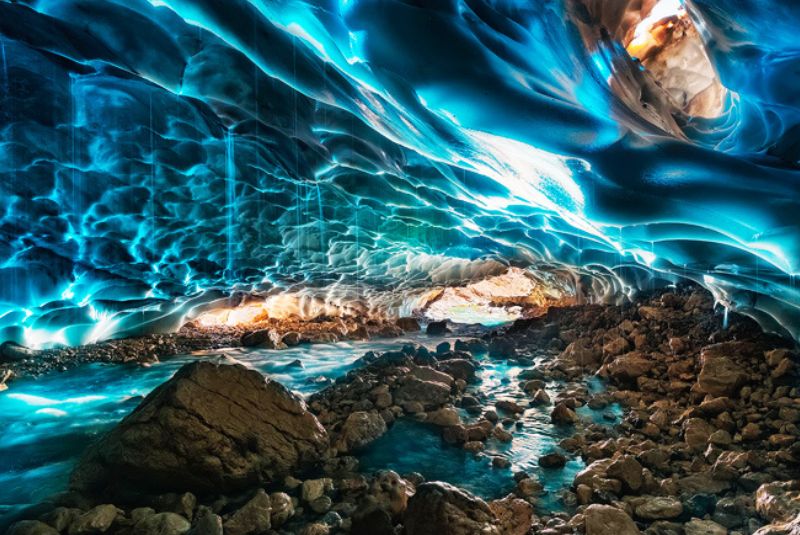
Chama Ice Cave is one of the most impressive caves in the province, with its location in deep valleys and the accumulation of snow for many years, causing the ice caps and vast masses of snow to remain permanently in all seasons. However, the cave's icy layers are thin and fragile in hot seasons, making it necessary to avoid passing over them. Under the cave's surface, you'll also find a cold water spring flowing to the Kuhrang dam, making it a delightful tourist attraction.
Due to the cave's location in front of the Chama Plain, it is suitable for Chaharmahal and Bakhtiari nomads' tents, where you'll have a chance to see the nomads and enjoy their hospitality and fresh dairy during Summer.
MahdiShahr Darband Cave
Darband Cave is one of the most magnificent limestone caves in Iran. It is located just two kilometers north of the Darband region in Mahdishahr City. This cave is situated on the southern slopes of the Alborz mountains and the heights of Darband, on the slopes of the Laherd mountain.
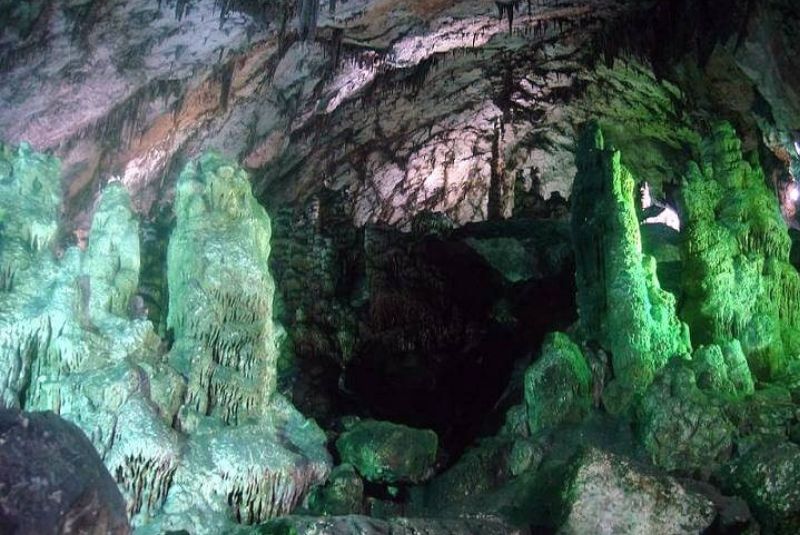
The Darband Cave is not only a natural wonder, but it also has a rich history. Humans once inhabited it in the past, and today, it is home to many legends and stories about the discovery of old artifacts and the type of cave formation. Among the artifacts found in this cave are broken sherds of pottery, the oldest of which have been estimated to date back to the first millennium AD.
An ancient relic related to the 5th century AH and a gold coin embossed with the 'kufic' script related to the late Saljuqi period or the beginning of the Mongol invasion has also been found here. Besides this, glazed bowls from the Mazandaran region and fine, ancient earthenware from the territory of Gorgan have been discovered here.
But what makes this cave unique are the huge stalactites, which have a regular shape, with heights ranging from four to fourteen meters. The tallest of these stalactites can be seen from the cave's entrance. The interior space of the cave is oval, measuring 91 meters in length, 36 meters in width, and with a maximum height of 20 meters.
| Read more: All You Should Know About Iran's Deserts
Ayub Cave
This magnificent cave is located sixteen kilometers southwest of Dehaj, in Shahr-e Babak, Kerman Province. The cave is a volcanic mountain with igneous rocks, so you won't see stalactites or stalagmites. But the magnificent formations on the walls called mummies will take your breath away. They look like stalactites hanging from the wall and were believed to have been used to heal bone diseases.

But what makes this cave truly special is its history. Legend has it that Job, the prophet, who suffered from skin disease, was healed after bathing in the water from a spring inside the cave. This is why the cave is now called Ayoub (Job) cave. Today, the water from the spring flows outside through a piping system.
Ayub Cave is also listed as a national heritage of Iran and is known for having the biggest opening and the tallest ceiling of all the caves in the country.
| Suggestion: Persian Garden | A Piece of Paradise in Iran
As you explore the cave, you'll come across many fascinating features, including a small pool shaped like a mortar called Howz-e Arezou (wishing pool). According to local beliefs, if a wisher throws a stone into the pool and the stone passes through the hole in the pool, their wish will be granted. There is also a platform of megaliths called Manzelgah, which provides a resting area for cavers.


Comment
Leave a Comment